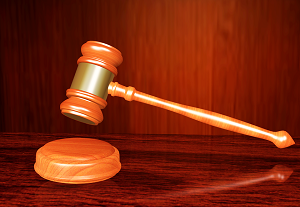Court Essay Slow Motion Video Makes People Look Guiltier
 Video recording, including hidden cameras, is an admissible tool that helps to provide the evidence in court. Audio and video materials help the court to establish the circumstances under which the crime was committed. Jury watches video footage of crimes to identify whether the person is guilty or not and such videos help to analyze and define the events that took place and their seriousness. Video and audio evidence can be made in many different ways, due to household tape recorders, cell phones or surveillance system. But the validity of this evidence will be only accepted by court on condition that the authenticity of the recording itself was proven.
Video recording, including hidden cameras, is an admissible tool that helps to provide the evidence in court. Audio and video materials help the court to establish the circumstances under which the crime was committed. Jury watches video footage of crimes to identify whether the person is guilty or not and such videos help to analyze and define the events that took place and their seriousness. Video and audio evidence can be made in many different ways, due to household tape recorders, cell phones or surveillance system. But the validity of this evidence will be only accepted by court on condition that the authenticity of the recording itself was proven.
Along with the advantages of slow-motion videos, there are also disadvantages that cause bias in court. Proceedings of National Academy of Sciences, the United States of America released a research according to which the viewers watching a slow-motion video of the committed crime considered such crime to be thought through and calculated, but not impulsively committed. The viewers were asked to watch two types of videos: slow-motion video and a regular speed video. The participants of the experiment who watched the slow-motion video version believe in premeditation of the committed crime.
There were also other experiments carried out to prove the bias nature of slow-mo video type. There were 489 participants in the experiment who were shown the video with the armed robbery where the clerk was shot. Watching the slow-mo video of the event, but not at regular speed, the viewers believed that the wrongdoer intended to kill the clerk. In another experiment the participants were shown a video with a football tackle with the involvement of the forbidden helmet-to-helmet trick. The viewers of slow-motion video state that the player who did the helmet-to-helmet hit acted intently towards the other player.
The question now arises of whether the jury must use slow-motion videos during court proceedings or due to its bias nature, videos of such type must be banned for good?! Such bias does a serious damage to the accused party and influences the whole court process in general. Premeditated crimes get more serious sentence and punishment accordingly and it does matter when you are charged with reflexive second-degree murder or the first-degree murder. Slow-motion videos can give a false impression that the actions were planned by the person. It does not necessarily mean that slow-motion videos must not be used and accepted in court, but it does mean that the benefit of such video types may cause serious consequences to the guilty party.
Slow motion videos can make boring moments look funny ones and unseen things visible ones. Videos of such type can make not guilty person a guilty one. It may seem not serious, but when it comes to returning the verdict and punishment, it is more than serious, it is of vital importance as for the footage evidence. Of course, it doesn’t refute the fact that the person who committed a crime will have to answer for his actions, but at least the verdict he receives will be fair.
References:
- Slow-motion videos of a crime can cause jurors to view wrongdoing as intentional, study finds. By Debra Cassens Weiss, August 11, 2016 Harmful actions may seem more sinister when viewed in slow motion, study finds. Los Angeles Times, by Amina Khan, August 2, 2016
- Slow-motion replays can make juries FOUR times more likely to convict someone of a crime, Daily Mail Online, by Ryan O’Hare, August 2, 2016
- Can slow-motion video bias jury trials? The Christian science monitor, by Nicole Orttung, August 8, 2016
- Slow-Motion Video Makes People Look More Guilty, Study Shows. How stuff works, by Yves Jeffcoat, August 10, 2016